Beyond the beach: We learn from experience
By GraceAnna Castleberry | “Luke, do you see that fiddler crab waving at us?”, I ask my nephew as we kneel by the salt marsh. We are on a nature walk, which is one of our traditions whenever my nephews visit. “Yes,” Luke replies, “What is he doing?” We watch the small crab wave his oversized white claw back and forth. “He’s trying to find a wife,” I respond, watching as Luke’s face erupts in a smile and he starts to giggle. “Yes,” I continue, “he’s waving at the girl crabs trying to get at least one to pay attention to him. Look a little closer and you’ll see other boy crabs doing the same thing.” Luke creeps nearer to the marsh trying to catch a glimpse of some of the other male fiddler crabs strutting their stuff.
I watch his four-year-old frame stare in curiosity as he examines the wetland habitat around him.
I’m surprised that I remember that little fact learned from my childhood here in the Lowcountry. I wasn’t much older than Luke when I discovered the interesting mating behavior of fiddler crabs. I was attending a nature walk at Hunting Island State Park with my brothers and some of our friends. A park ranger took us into the salt marsh and showed us the world of crabs, snails, plants, and (everybody’s favorite) pluff mud. Just like Luke, I had been mesmerized by the tiny, yet incredibly detailed life system before me. Suddenly, my eyes were opened to see  much more than muck and reeds. I discovered a world beyond the beach, which I already loved so much. The park ranger pointed out tiny holes in the mud called burrows, which fiddler crabs construct deep in the sand. He showed us miniature dirt balls that crabs spit out after sucking the salt out of the mud. We watched in amazement as he pulled a marsh plant out of the sand and explained why it was safe for humans to eat. If I had simply read about the salt marsh environment in a textbook, I might not have recalled it almost twenty years later.
much more than muck and reeds. I discovered a world beyond the beach, which I already loved so much. The park ranger pointed out tiny holes in the mud called burrows, which fiddler crabs construct deep in the sand. He showed us miniature dirt balls that crabs spit out after sucking the salt out of the mud. We watched in amazement as he pulled a marsh plant out of the sand and explained why it was safe for humans to eat. If I had simply read about the salt marsh environment in a textbook, I might not have recalled it almost twenty years later.
But because I discovered it firsthand, I remembered it vividly.
One of the many things I love about the Lowcountry, is the unique opportunity for discovery all around us. Hunting Island State Park provides a multitude of such opportunities. There are miles of beautiful coastline, but there is so much more at Hunting Island than just the beach. Explore the salt marsh, marine forest, lagoon, and sand dunes. Don’t miss the lighthouse, which is rich in unique history and is the only one in the state accessible to the public. Learn about the creatures and plants that are unique to South Carolina’s Lowcountry by taking a hike in the forest led by a trained naturalist. Go to the Hunting Island Nature Center. Drop by Hunting Island’s Visitor’s Center for a slideshow about alligators, then visit a nearby pond to view them live. Or join a “Secrets of the Salt Marsh” weekly tour and take a closer look at one of the most productive ecosystems in the world.
a trained naturalist. Go to the Hunting Island Nature Center. Drop by Hunting Island’s Visitor’s Center for a slideshow about alligators, then visit a nearby pond to view them live. Or join a “Secrets of the Salt Marsh” weekly tour and take a closer look at one of the most productive ecosystems in the world.
But it’s not just about the experience you have when you’re there; it’s about what you take with you when you leave. It’s the memories you make with your children, a love and appreciation for a new place, and maybe even a few educational facts that will resurface when questioned by an inquisitive four-year-old.
I watch as Luke steps closer to the marsh, just a few feet from the fiddler crabs. Within seconds, all the crabs scurry into their burrows. “Oh no!” He exclaims in disappointment. “It’s okay,” I respond, “We’ll stop on our way back and look at them some more.” Luke takes my hand as we continue our nature walk. As we cross over the small wooden bridge, I smile, hoping that years down the road Luke will remember our conversation in the salt marsh.
And who knows?
Maybe, just maybe, he’ll take nature walks and share the story of the fiddler crab with the children in his life.







